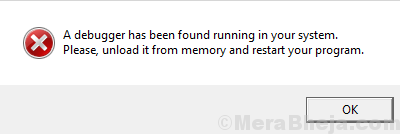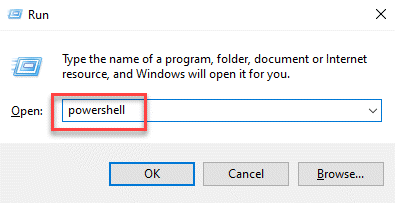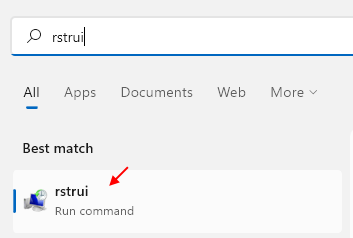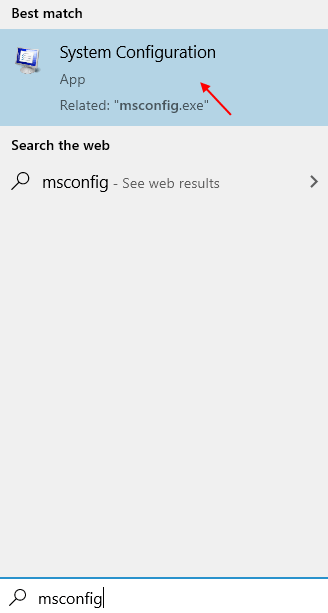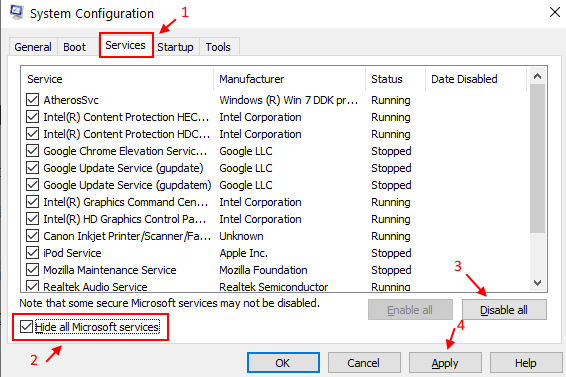debugger is found on this machine что делать
October 21, 2021 By karan
As sophisticated as video games become, the more complex their algorithms become. With these complex algorithms, we have started facing new errors. One such error is:
A debugger has been found running in your system. Please, unload it from memory and restart the program.
The cause of the error is that gaming companies want to prevent users from debugging their source code to protect their data.
If the game suspects anything such, it will try to block the launch to protect their data.
We could try the following steps to resolve the issue:
Solution 1] Windows update using Powershell
Perhaps the interfering debugger could be from a recent update. If Microsoft fixed the patch, a complete Windows update would help fix the cause. This has to be done using Powershell.
1] Press Win + R to open the Run window and type the command PowerShell. Press Enter to open the Powershell window.
2] Type the following command in the Powershell window and press Enter:
3] Restart your system.
Solution 2 ] Restore your system
1 – Search RSTRUI in Windows search box.
Solution 3] Try again in Clean Boot state
1- Search msconfig in Windows taskbar search.
2 – Click on msconfig from the search result.
3 – Now, Click on Services tab.
5 – Now, click on Disable all.
7- Click on Restart now.
8 – Now, when the system restarts in Clean Boot state, then try again.
Solution 4] Rollback Windows updates
Since the issue could be with a recent Windows update, we could try rolling back recent updates and check if it helps.
1] Click on the Start button and then on the gear-like symbol to open the Windows Settings window.
2] Select Updates and Security from options and click on View update history.
3] Click on Uninstall updates and from the list of recently installed updates, right-click and uninstall the troublesome ones.
Solution 5] Add the game to your antivirus exception list
The error occurs if the game senses that some software is trying to debug its code. More often than not, this is done by antivirus software to check from malware hidden in the source code of applications.
In such a case, open your antivirus application and add the game as an exception to the list of programs to be scanned. Restart your system after that.
If this doesn’t work, you might consider disabling the antivirus temporarily to isolate the issue.
Solution 6] Check for recently installed third-party applications
If the game was working fine earlier and has started showing issues recently, it could be possible that a recently installed third-party application might be interfering. We can check and remove the same.
1] Press Win + R to open the Run window and type the command control panel. Hit Enter to open the Control Panel window.
2] Go to Programs and Features. It will open the list of all programs installed on the system. Sort them in the order of date of installation.
3] Check if any recently installed software could be troublesome. Usually freeware and lesser-known software are problematic. We could try deleting them to isolate the issue. They could be installed again later.
Debugger is found on this machine что делать
Asked by:
General discussion
Not sure if this is the correct forum, I could not find one that it would fit in.
I know what the error is because I have captured the event and have logged it. But the stupid JIT debugger is capturing this event and locking up the program. I have to go to the servers «Task Manager» to End the task.
in the config file, but the JIT is still gets executed.
All replies
Welcome to the MSDN forum!
You can try to disable Just-In-Time Debugging.
Much further information, please refer to:
Paul Zhou [MSFT]
MSDN Community Support | Feedback to us
Get or Request Code Sample from Microsoft
Please remember to mark the replies as answers if they help and unmark them if they provide no help.
Debugger is found on this machine
Enviado desde mi iPhone utilizando Tapatalk
seanchen
Client
Error:
Debugger is found on this machine
The Enigma Protector:
Internal Protection Error,please contact to author!
rostonix
Administrator
seanchen
Client
I installed zp on server。 open projectMake show
Error:
Debugger is found on this machine
open zennoposter show
The Enigma Protector:
Internal Protection Error,please contact to author!
rostonix
Administrator
Please see my question above.
seanchen
Client
Please see my question above.
This behavior occurs if one of the following conditions is true:
Your connection to the remote computer was broken.
Your user account on the remote computer is disabled.
Your password on the remote computer has expired.
To resolve this behavior
Make sure that the local computer and the remote computer are in the same network. To do this, use Microsoft Windows Explorer (or File Explorer) to try to access the remote computer.
Make sure that the user account that you are using to connect to the remote computer is enabled.
Make sure that the password that you are using to connect to the remote computer is valid and has not expired.
Enviado desde mi iPhone utilizando Tapatalk
seanchen
Client
Error:
Debugger is found on this machine
The Enigma Protector:
Internal Protection Error,please contact to author!
rostonix
Administrator
seanchen
Client
I installed zp on server。 open projectMake show
Error:
Debugger is found on this machine
open zennoposter show
The Enigma Protector:
Internal Protection Error,please contact to author!
rostonix
Administrator
Please see my question above.
seanchen
Client
Please see my question above.
Fix bugs easily using a debugger
A software engineer, data scientist, web developer (or anyone really who doesn’t work with their hands) is only as good as the tools at his or her disposal. And for someone who needs to write and fix computer code, the debugger is one of the most important tools. It, therefore, surprises me to meet programmers, albeit usually novices, that yet have to discover the power of a debugger.
Usually, when someone has just started learning to program, they would like to see the value of variables in different places of their program. The most straightforward way to do this, and often recommended at the beginning of programming courses, is to insert “print” or “log” statements into the code. Once they learn this so-called print statement debugging, they enthusiastically start littering their code with these to help them understand how their code is running.
Using “print” statements is certainly a simple and viable method to visualize the state of your program. Even more, it is the only way in systems where you only have access to the program output. However, every time you add a “print” statement to your program, you need to recompile it (for compiled programming languages) and run it again. Which makes this trial-and-error process quite a time-consuming task.
There are also more interactive ways to write code, which give you additional feedback while you develop. Some developers like to work with read-eval-print loop ( REPL in short) tools. Jupyter notebooks is one such tool that is popular with data scientists.
REPL-based tools evaluate short code snippets, provided by the developer, and return the result immediately. Each evaluated piece of code also affects the current REPL state. New variables can be defined or existing ones modified. This lets the developer run a program bit by bit and get immediate feedback on the result of their code.
REPL tools are a good alternative to print statement debugging. They make it easy to tweak the program state or the bit you would like to test and see the result. Their challenge ultimately is recreating the state of your program. In order to do this, one has to first import or recreate all the required variables and functions. At this point some developers may be thinking “but is there a better way?”. “Yes” is the answer. Get ready to enter a new chapter of your programming career.
A debugger is a computer program that runs your code interactively. It lets you define conditions in which your program should be interrupted. Once interrupted, you can inspect the program state at that point. Or you can run your program line-by-line to see how the state changes while your program is running. These features boost your productivity as a programmer significantly, because they let you single out where in your code a bug originates.
But not only that. A debugger can also assist you with understanding your own code, your colleague’s code, and even code from imported libraries and frameworks. It is not rare for me to step into the code of my project’s dependencies to understand why it’s behaving a certain way. It has even helped me contributing to open-source projects by exactly pinpointing which lines need to be corrected to fix a bug.
Dev’s spend about 50% of their time making their code work and fixing bugs. Using a debugger can speed up this process greatly, so developers can spend more time on work that actually provides value: adding new features.
There are two types of debuggers: source-level debuggers and machine-language debuggers. We’ll be focusing on source-level debuggers, as the chance that you will ever need to debug machine language (i.e. assembly code) is minimal, unless you work on compilers or need to optimize low-level routines.
How to use a debugger
Here I will discuss some of the concepts commonly found in debuggers and how they can help you become more productive.
My favorite debugger at the moment is the one integrated into JetBrains IDE’s [I am not affiliated to them whatsoever]. So for the rest of the article, I will apply the same terminology that they use. But don’t click away yet! Other debuggers function similarly and apply the same concepts. So even if you have a preference for an IDE like Visual Studio Code, Eclipse, or NetBeans, this will still be useful to you.
Display
To start debugging, run your code in debug mode. This can usually be done by clicking a button with an icon of a beetle or with just the text “Debug”. I would advise you to look up the keyboard shortcut for this mode as early as possible, as you’ll probably going to need it a lot!
With debug mode enabled, debuggers will run your code while keeping track of the current variables and their values. When you suspend the debugger (you will learn how later), you will be able to inspect all of the variables. In JetBrains IDE’s you can also see the current variable value by clicking right from the place where variables are defined.
Something else you can usually view are the stacked frames of your program. A frame is essentially the current scope of your program. If you execute a function, a new frame is created. For multi-threaded applications, it can be useful to navigate the various threads as well. Each thread has its own set of frames and respective variable states.
While your program is suspended, you can also evaluate complex expressions. Simply submit an expression in the current programming language and press “Evaluate”. This lets you drill down to the bottom of every variable. You can check the contents of a list or specific items in a JSON object. If you find yourself evaluating the same expression often, consider adding it as a watch. This will add the expression to the tracked variables so that you can see the result at any point.
Breakpoints
When you start your program in debug mode, it will run continuously until it has completed or hit an exception. In order to start inspecting the program state, you need to set breakpoints. These are conditions, that when met, suspend program execution. At that point, you get access to all variables in scope, the option to execute expressions and control further execution. Even wilder is being able to edit the variable value during run-time and see how that affects your program.
There are different types of breakpoints. You can break at a specific line in the code. This is usually done by clicking in the gutter left of the line, or by hitting a certain keyboard combination when your caret is on the line. In addition, one can add a condition that must be met for the program to pause at that breakpoint.
Another possibility is to break when an exception is raised. This very useful to find out in which case a bug arises. In JetBrains IDE’s you first need to open the menu that shows you all breakpoints. By default, the option will be shown for breaking on any exception. To break on a specific exception, click the “+” button.
Some debuggers have the ability to break when the value of a specific variable changes. These are so-called watchpoints or data breakpoints. JetBrains IDE’s lack this feature unfortunately.
There can also be situations where you would like to temporarily disable breakpoints so you can let your program run normally. In the PyCharm debugger, and in most other debuggers, you can enable/disable individual breakpoints or mute all breakpoints temporarily. In addition, it also possible to remove the breakpoint once hit, so it only breaks once.
Enabling, disabling, or setting new breakpoints can be done during program execution. This is a killer feature and it makes debugging much more enjoyable than with the endless addition and removal of “print” statements.
Control execution
Once your program hits a breakpoint, you get access to a slew of options to control further execution. You can decide to run the code line-by-line using the s tep over function. Or you can jump into function calls with s tep into. There is also the s tep out option to step to the first line after returning from the current function. These different types of steps let you go up or down levels of your program to reach your desired depth of detail. To understand what imported modules do, it can be useful to step into their functions and follow along.
Some debuggers have the option to do reverse debugging, which essentially gives you the ability to step back as well. Unfortunately, we have yet to see this feature in JetBrains IDEs.
Other available commands are stopping the program completely, restarting the program, continue normally (until the next breakpoint), or run to cursor. The latter is especially useful to let your program reach a point of interest. Besides that, it is also possible to pause a running program manually. But I find this only useful to determine why my program doesn’t seem to progress (in many cases due to an endless loop).
🟥 Stop ‘blogpost’
By now I hope that you have been convinced of all the advantages of a debugger when you deal with code regularly. Their features that let you trace and control program execution will deepen your understanding of any code that crosses your path. Bugs will be easier to solve and head hairs will be spared. In fact, I’d say that once you get used to programming with a debugger, you will never go back.
This is my first Medium post. Let me know your thoughts in the comments! Cheers
Отладка Javascript
(Примечание: наверное эта статья больше для новичков. Так что не судите строго)
Казалось бы — да что тут рассказывать? Всё же очевидно. Но вопрос этот мне задают с завидной частотой. Да и мне есть, что рассказать.
Приведу конкретные примеры и расскажу, как я их решаю.
Видим цель, не видим препятствий
JavaScript вывалил ошибку? Замечательно! Нет, это конечно плохо, но гораздо лучше, чем если бы он промолчал (да, бывает и такое!) в случае ошибки.
Наша цель — понять, что же, чёрт побери, произошло? Но сначала — рекламная пауза лирическое отступление: средства JavaScript Debug’а в основных браузерах.
Debuggers
Как «тормознуть» поток
А вот вариант с условной остановкой:
Мне так нравится гораздо больше, чем ставить «бряку»: так я пишу код и дебажу его по сути в одном месте, а не в двух.
Debug через alert()
Это наименее информативный debug, который к тому же останавливает поток JavaScript. Да к тому же модальный по отношению к браузеру. Забудьте, что он вообще существует.
Особенность breakpoint’ов
Рассмотренные варианты все, как один, тормозят поток JavaScript. Это плохо!
Почему? Если в момент остановки скрипта у вас был запущен AJAX-запрос или Timeout, и ответ не успел вернутся — он может уже не вернутся никогда. Согласитесь, в современных web-проектах этого добра хватает. Поэтому в момент «экстренной остановки» скрипта мы уже не сможем адекватно debug’ать дальше — часть логики будет безвозвратно утеряна.
Поэтому я стараюсь избегать на практике debug с остановкой.
«Debugging JavaScript with breakpoints is bad, mmkay?» © Mr. Mackey, South Park
Однако: breakpoint есть breakpoint, и если вы исследуете ну очень запущенный баг — тут без остановки не обойтись (надо будет сделать watch текущим переменным и т.д.)
«Правильный» debug
Пример №1
JavaScript показал ошибку. Надо понять — что к чему.
Включаем в debugger’е режим «Break On Error»:
Воспроизводим ошибку снова. JavaScript останавливается. Видим место ошибки, делаем watch и точно определяем, в чём же дело.
Пример №2
CASE:
JavaScript не показал ошибку. Но вы знаете, что она есть (как суслик). Да, такое иногда бывает.
CASE:
Надо просто продебажить некий код. Скажем, посмотреть, что происходит по нажатию кнопки или после AJAX-загрузки данных.
Тут сложней — надо найти, с чего начать.
Немного искусства
// условная остановка
if (allowBreakpoints == true )
debugger;
Конечно данный способ не идеален. Бывает, что даёт промашки. Но это хороший способ, мне он сильно помагает в работе.
Так, значит место в коде нашли, бряку поставили. Если не хочется (или просто нельзя) изменять исходный код — можно вместо ключевого слова debugger поставить brakepoint в средстве отладки.
Пример №3
Тот же случай: надо продебажить некий код. Скажем, посмотреть, что происходит по нажатию кнопки или после AJAX-загрузки данных. Но в этот раз мы не можем тормозить поток JavaScript по описанным мной причинам.
CASE UNO
variable_to_watch — объект, который изменился с момента вывода в консоль. А хочется увидить его состояние именно на момент вызова.
CASE DUO
Нет консоли? Пишем в адресной строке: javascript:alert(temp_var.objMethod()); void 0;
Пример №4
Ещё один пример. Возможно, немного странный. Хочется продебажить метод 3d-party-framework’а (например, ExtJS), но вот беда — нельзя тормозить JavaScript и нет доступа к исходному коду (правда странный пример? 🙂
Что же делать? Я делаю так:
Создаём файл с патчем: my-ext-patch.js, и подключаем его после ext-all.js
Внутри пишем что-то вроде:
Ext.form.Form.render = function (container) < // Wrap'им метод
// А вот и дебаг
console.log(container);
// Возможны варианты:
// console.dir(container);
// console.log(window.t = container);
// debugger;
Извращение? Возможно. Но мне нравится >:)
